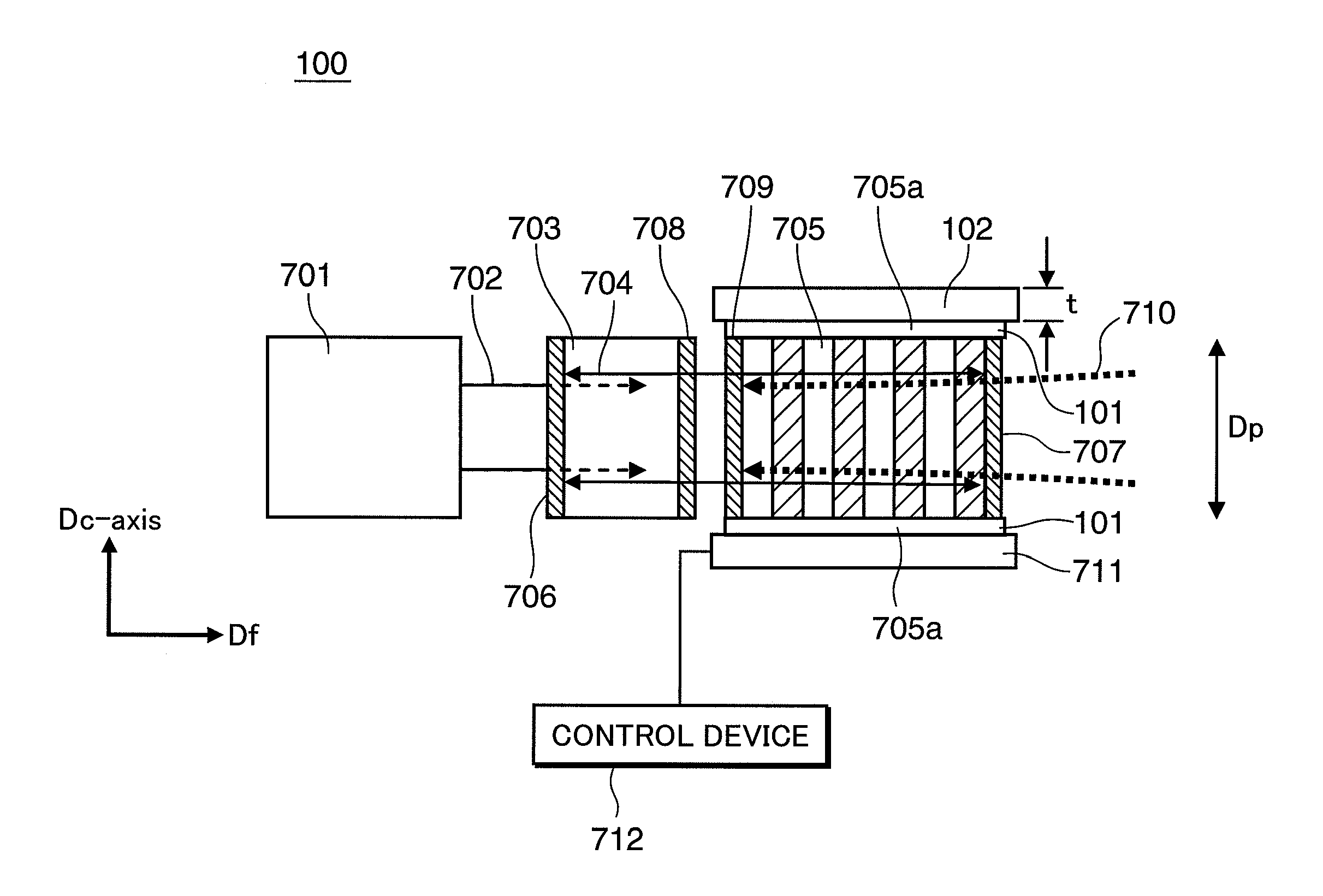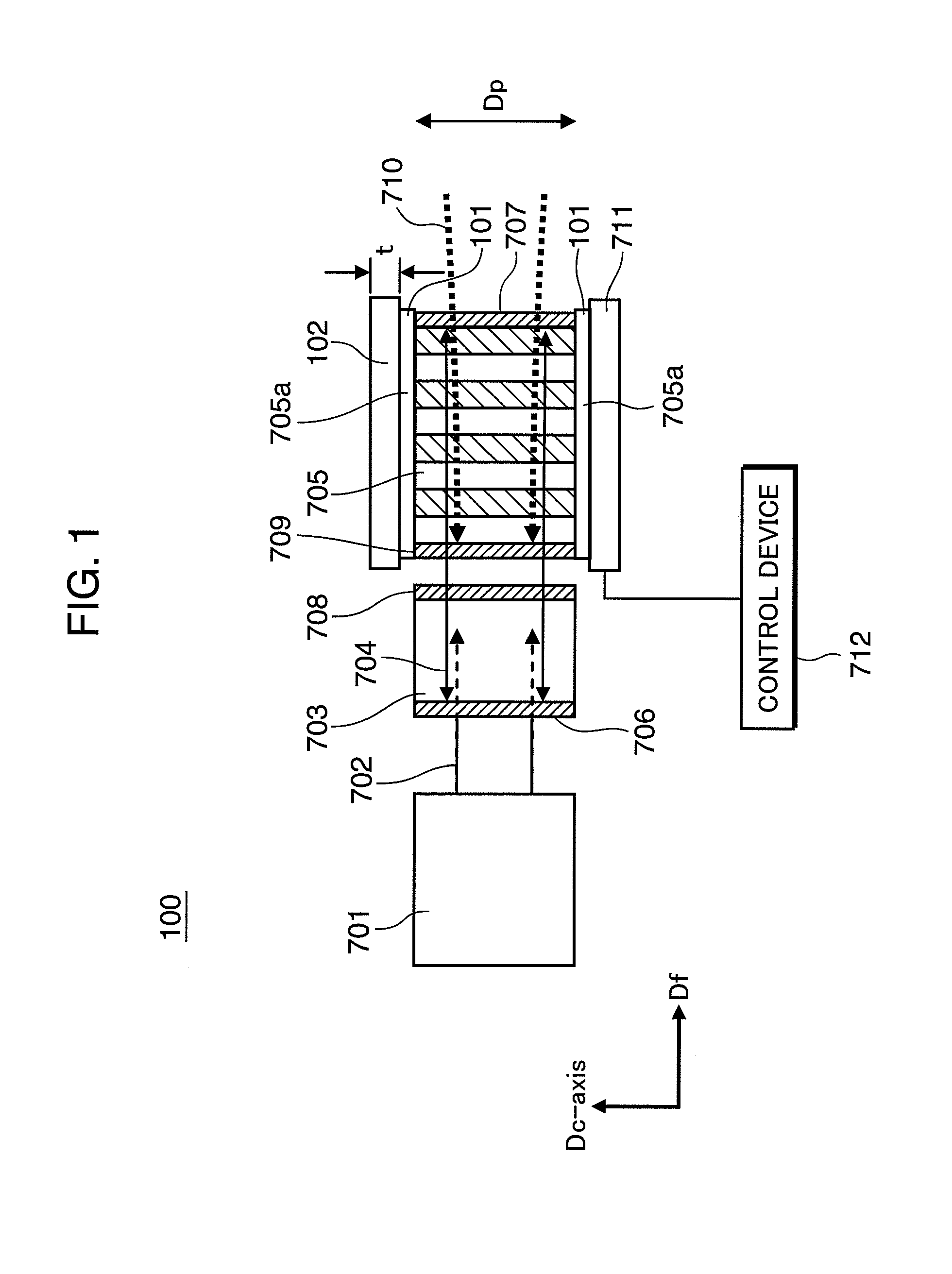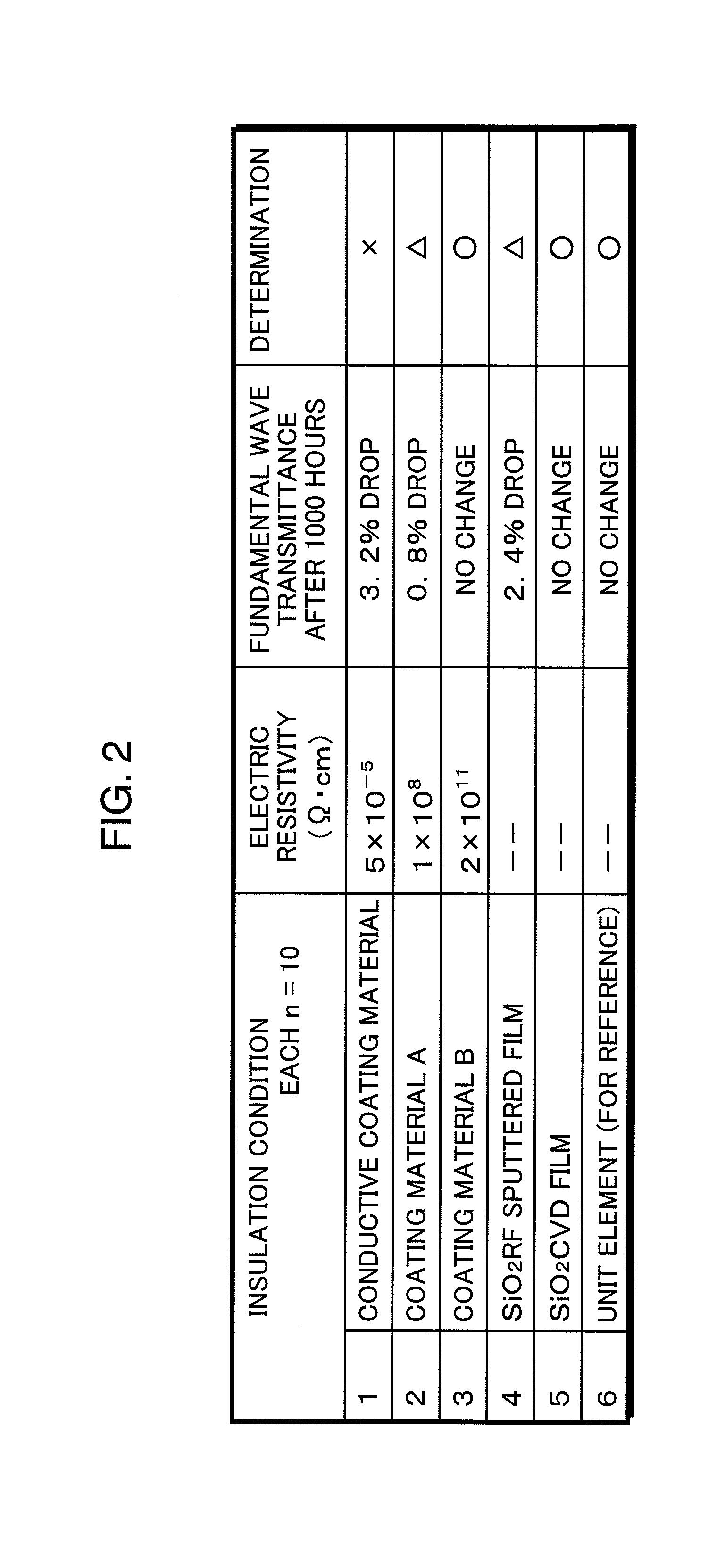Laser light source, image display apparatus, and processing apparatus
a technology of laser light source and image display device, which is applied in the direction of laser details, instruments, light demodulation, etc., can solve the problems of reducing the output of wavelength-converted light emitted from the laser light source over time, and the difficult oscillation of the use of semiconductor lasers, so as to suppress the expansion and contraction of spontaneous polarization, suppress the effect of reducing output and suppressing the increase of optical absorption over tim
- Summary
- Abstract
- Description
- Claims
- Application Information
AI Technical Summary
Benefits of technology
Problems solved by technology
Method used
Image
Examples
first embodiment
[0045]A laser light source according to one embodiment of the invention will be described in the following with reference mainly to FIG. 1 through FIG. 4, FIG. 6A, and FIG. 6B. As will be described in detail below, the laser light source in accordance with the present embodiment is capable of suppressing a decrease in output of a wavelength-converted laser light over time.
[0046]Firstly, results of comparative experiments using a conventional laser light source will be explained to ease the explanations of the laser light source in accordance with the present embodiment.
[0047]As a comparative experiment using the conventional wavelength conversion laser light source 700 shown in FIG. 16, the wavelength conversion laser light source 700 was pulse-driven for 1000 hours under the conditions that the peak output was 1 W, the repeating frequency was 100 kHz, and the duty was 50%. As shown in FIG. 17, it becomes obvious from the results of this comparative experiment that an output power o...
second embodiment
[0119]Another embodiment of the invention will be described in the following with reference to the drawings.
[0120]Because a wavelength conversion laser light source of the present embodiment has a basic structure which is in common with the wavelength conversion laser light source of the first embodiment above, a characteristic portion alone will be described. Members having the same structures and functions will be designated by the same reference numerals, and the descriptions thereof shall be omitted where appropriate.
[0121]FIG. 5 is an explanatory view schematically showing the structure of a wavelength conversion laser light source 1300 of the present embodiment. The wavelength conversion laser light source 1300 of the present embodiment is an intra-resonator green laser light source as with the counterpart of the first embodiment above.
[0122]The wavelength conversion laser light source 1300 does not include the solid-state laser crystal 703 in the wavelength conversion laser l...
third embodiment
[0128]Still another embodiment of the invention will be described in the following with reference to the drawings.
[0129]Because the wavelength conversion laser light source of the present embodiment has a basic structure which is in common with the wavelength conversion laser light source of the first embodiment above, a characteristic portion alone will be described. Members of similar configurations are labeled with like reference numerals and descriptions of such members are omitted where appropriate.
[0130]As will be described below, a wavelength conversion laser light source of the present embodiment includes a wavelength conversion element capable of lessening a problem that occurs in a case where high-output wavelength conversion in a visible light region exceeding several W is performed.
[0131]A problem to be solved for a wavelength conversion element made of an LN or LT crystal is to prevent a phenomenon (photorefractive phenomenon) called optical damage caused by a change of...
PUM
 Login to View More
Login to View More Abstract
Description
Claims
Application Information
 Login to View More
Login to View More - R&D
- Intellectual Property
- Life Sciences
- Materials
- Tech Scout
- Unparalleled Data Quality
- Higher Quality Content
- 60% Fewer Hallucinations
Browse by: Latest US Patents, China's latest patents, Technical Efficacy Thesaurus, Application Domain, Technology Topic, Popular Technical Reports.
© 2025 PatSnap. All rights reserved.Legal|Privacy policy|Modern Slavery Act Transparency Statement|Sitemap|About US| Contact US: help@patsnap.com



